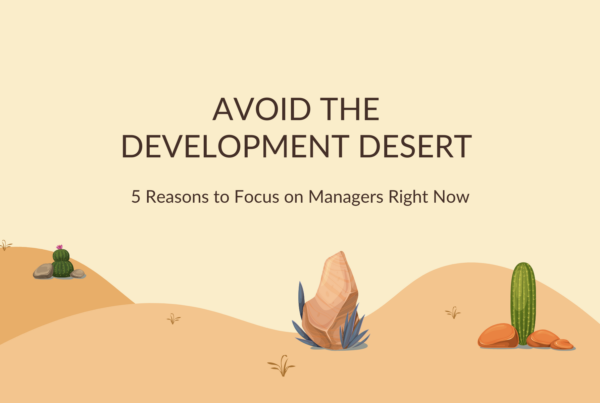It can be immensely challenging to tackle obstacles and try new things. So much so that many people never attempt it. But, the uncertain space just outside your comfort zone is where the greatest innovations, most fulfilling accomplishments, and the most impactful leadership experience exists.
Effective leaders understand the benefits of stretching themselves to learn new things, grow beyond their current skill set, and develop a strong connection with those around them. Let’s look at how to step outside your comfort zone as a leader and become a more well-rounded, engaging coach and partner to your team.
Identify What’s Stopping You
Before you can break through the barriers holding you back, you need to know why they exist in the first place. There are several possible barriers, and some will affect you more than others. Examples of thoughts you might be grappling with include:
- Am I good enough?
- I’m faking my way through it
- I’m afraid of failing
- I want people to like me
- Why change? It’s easier to do it my way
The challenges you encounter when you venture outside of your comfort zone are different from anyone else’s. For this reason, there is no master list of roadblocks leaders face; these fears, anxieties, and self-talk are unique to your life experience. To identify these issues, spend time reflecting on what holds you back. Stepping outside your comfort zone gets much easier when you recognize why you feel uncomfortable.
Prepare for the Leadership Challenge of Change
Think of your comfort zone as the center of a Venn diagram consisting of your education, work experience, and personal preferences. The tasks you complete at this cross section are always based on the life and professional experience that guides your decisions. Stepping away from these touchpoints can be immensely difficult. It’s important to recognize how hard this process might be and that it will take time and effort to make a change.
This can be confrontational at times. When you address issues you have been purposefully avoiding, internal and external conflict can arise that is immensely uncomfortable. By addressing these challenges, however, you will ultimately become a much better, more confident leader.
Leadership Comfort: Outline the Pros and Cons
One of your biggest obstacles will be the fear of what could go wrong. Research has shown that we vastly overestimate the impact of negative consequences. Stress levels increase and the resulting fear often keeps us from taking risks.
To combat this, write a list of all the things that may actually go wrong.. For example, if you’re struggling with public speaking, ask yourself what the worst possible outcome might be.
Embarrassment. A small audience. Physical discomfort.
Now contrast those with all of the benefits you could enjoy by taking that leap.
A larger personal network. Fulfillment in providing value to colleagues. Becoming a thought leader and industry icon.
This simple exercise can help to put the real-world implications of your decision in context, and writing it down often makes the proposed changes feel less scary than when they are just in your head.
Make a Plan to Take Action: Step Outside of Your Leadership Comfort
If the thought of doing something outside your comfort zone triggers anxiety, break the task into smaller pieces and implement an action plan to tackle them one at a time.
A great example is giving negative feedback to an employee. One of the biggest barriers to developing a culture of feedback is the extent to which managers avoid and fear those conversations. To overcome this, you can take additional steps before a meeting in which the hard feedback is given. Write down your thoughts in advance and take the time to identify some specific examples to illustrate where your feedback is coming from. Practice giving it by roleplaying with someone you trust to get used to the potential backlash.
Fear of the unknown can be a significant blocking factor. Take away the unknown by preparing as much as possible before diving into a new challenge.
Identify and Appreciate Your Successes
Whether it’s criticism as part of a performance review or a short speech given at a local meetup, celebrate success. Recognize that you’ve overcome previously unmovable barriers to do something new. Too often, leaders feel they should have already been doing these things. They treat their accomplishments as deficiencies overcome.
Stop thinking “I should have been able to do this years ago” and focus on the positive. You just busted through a significant mental block, upended years of habit, and took a step out into the unknown.
Get Help in Your Journey
It takes courage, time, and a commitment to do and experience new and uncomfortable things. None of this is easy. To tackle big challenges, it helps to have a support team who can provide insights, encouragement, and at times give you a push to keep moving forward.
Whether you’re attempting to overcome years of introversion or push aside your fear of not being liked and provide the feedback your direct reports need to hear, a mentor, colleague or coach can be an invaluable resource to help you keep pushing forward. Not only will an outside voice push you to keep trying new things, but they will also hold you accountable once you set new goals.
Download our editable Leadership Development Plan to set goals that will take you outside of your comfort zones.


